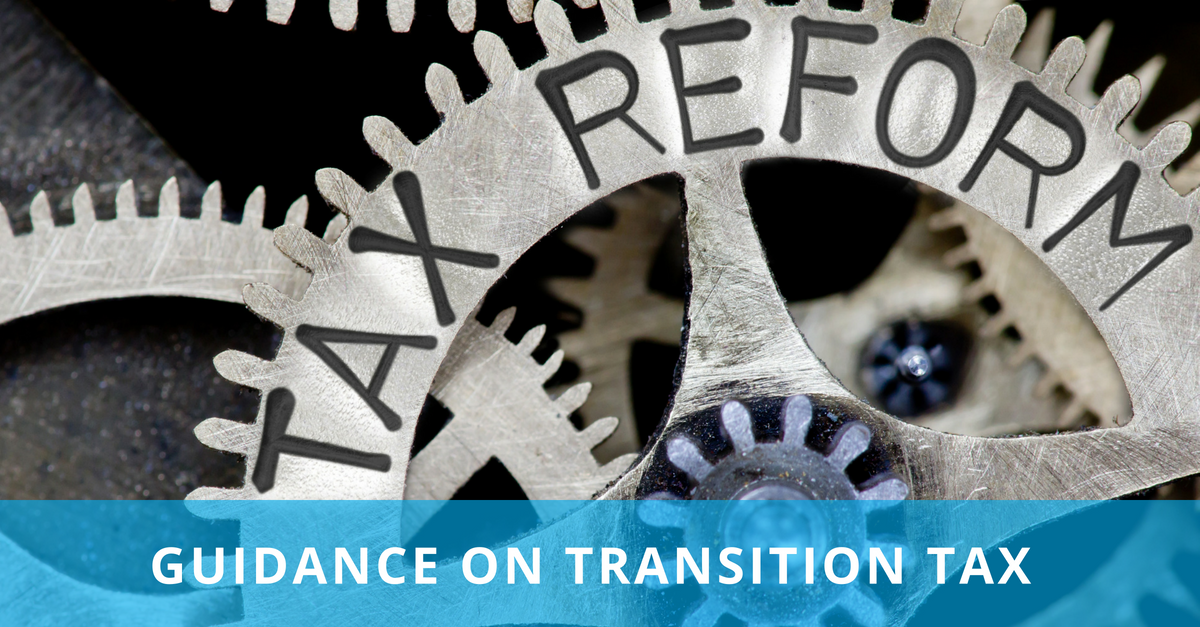While regulations were issued on the new Transition Tax (Sec. 965), not much new was provided on August 1, 2018 by Treasury and the IRS to help taxpayers navigate this deemed distribution requirement for foreign earnings. In fact, taxpayers had a very low batting average in having suggestions acted upon as there were 11 times in the preamble the phrase “not adopted” was written in response to comments sent in by taxpayers.
Concerned about your Transition Tax obligation? Contact us today.
The regulations basically followed the three Notices that had previously been issued as guidance in this area. There were some technical changes or clarifications, as well as reminders, but not much in the way of taxpayer favorable rules in helping you navigate these complex provisions.
Records as of Specific Dates
The administrative difficulties, especially for minority shareholders of specified foreign corporations that are not CFC, is acknowledged by the IRS, but no relief from the detailed requirements to determine E&P (or even tax pools for individuals electing 962 treatment) is provided. There is even an example where Subpart F (passive) income is determined as of two specific dates during 2017. Some types of Subpart F income might be specific date oriented, but most is earned over an entire year; how do you break this up?
Anti-Avoidance Rules
There are several rules that are set forth in the regulations where transactions will be disregarded if the transaction has a principle purpose of avoiding or reducing a Transition Tax element. This covers things such as changing the year-end of the foreign corporation or making a classification election. If there is a transaction that occurs after November 2, 2017 and does this, the transaction is ignored for purpose of calculating the tax. There is no de minimis exception and there is no allowance given if the transaction results in an increased liability under another code section.
Individuals
Individual owners of foreign corporations are not treated kindly under the Transition Tax rules, and the proposed regulations do not offer much relief. There was a request that individuals be permitted to calculate the transition income by prorating E&P for the November 2, 2017 measurement date based on year-end numbers. This comment is not adopted because allowing individuals to use year-end numbers and prorate to November 2, 2017, would allow taxpayers to base their transition number for both dates on the E&P as of a single date, contrary to the intent of the two E&P measurement dates in the statute. The November 2, 2017 date for determining E&P will be very problematic for most taxpayers.
Then, there was the request that guidance be provided changing the application of the participation exemption (deduction allowed to arrive at the 15.5% and 8% rates) for individuals. Both the 8 percent rate equivalent percentage and the 15.5 percent rate equivalent percentage are based off the highest rate of tax specified in section 11, which is applicable to corporations. As a result, when the participation exemption is calculated for individuals, the applicable rates of tax is closer to 9.05% and 17.54%. It is even worse if the individual has a fiscal year foreign corporation whose yearend is in 2018.
This response was anticipated by Congress. The relief (if you call if that) that was given was that the individual can make an election (Sec. 962) to be taxed at corporate tax rates on this income. However, then the eventual distribution of those same foreign profits will be taxed again at individual rates (which is not the case for corporations).
Reminders
The 3.8% net investment income tax is applicable without regard to any of the transition tax deferral or 8-year election benefits. If an election has been made to pay this tax when deemed income (Subpart F) has been earned, then the full amount of the net liability will be owned with the 2017 tax return of an individual. If an election was not made to pay the tax at the time of the deemed income inclusion, then the tax will be owned when the income is distributed (potentially as PTI). Also, it should be noted the 3.8% tax cannot be offset with foreign tax credits as can the Sec. 965 income.
What to Do?
Taxpayers will need to consider how they comply with this new guidance. There is also a concept known as “substantial compliance” with regulations that should be explored to determine what to do when the realities are that financial statements as of November 2, 2017 are problematic. Lack of compliance involving this new provision where no review is taken could result in the assessment of additional interest and penalties (or loss of the 8-year spread of time to pay the liability).




